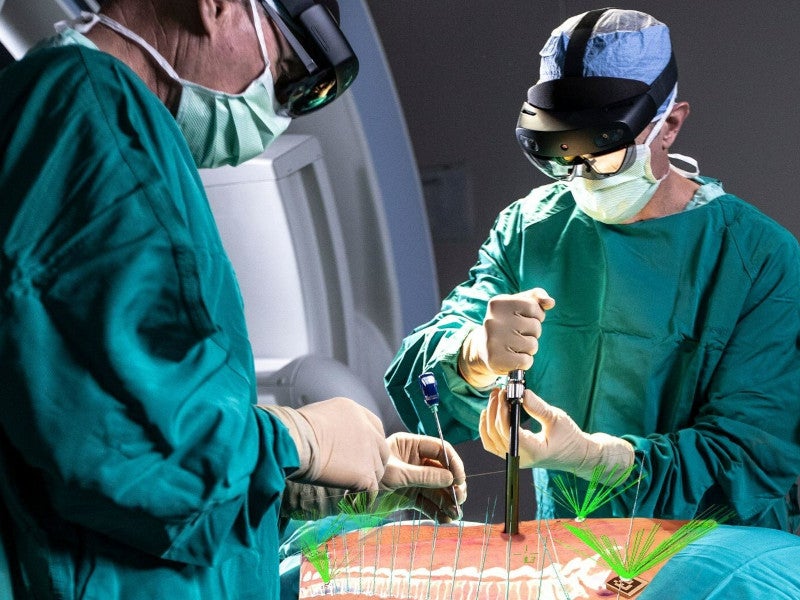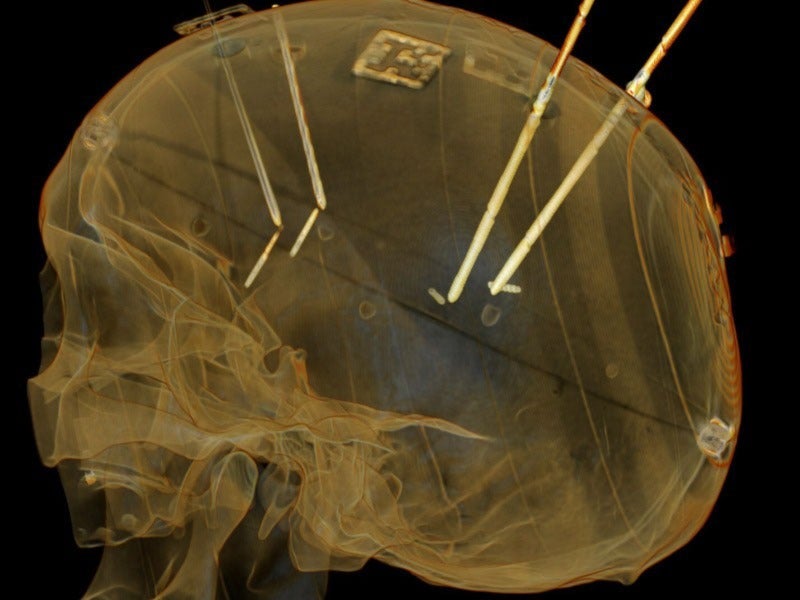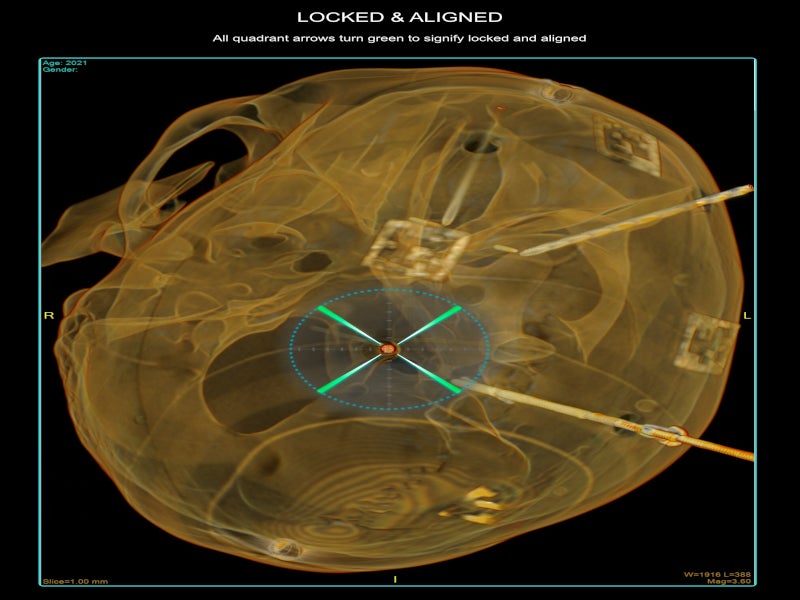Visualisation Augmented Reality (VisAR) is an AR surgical navigation system developed by US-based medical device company Novarad. It is designed to assist surgeons find the precise location of anatomical structures in either open or percutaneous spine procedures.
The system smoothly incorporates AR into the surgeon’s line of sight, superimposing essential information onto the patient’s anatomy in real time. It enables physicians, surgeons, and other medical practitioners to visualise and interact with complex anatomical structures in real time during diagnosis, surgical planning, and interventional procedures.
Novarad has partnered with Microsoft to employ its off-the-shelf pre-assembled AR headset technology, enabling cost reduction and the utilisation of anticipated hardware advancements. The wireless Microsoft HoloLens 2 visor worn by the physician, without any tethering, leads to the most compact operating room footprint compared to any other system available in the market.
Regulatory clearance for the AR device
The VisAR system received 510(k) approval from the US Food and Drug Administration (FDA) in June 2022.
In May 2023, Novarad received approval from Indonesia’s Food and Drug Administration for the system.
Working of VisAR surgical navigation system
The VisAR surgical navigation system is an affordable state-of-the-art navigation technology, which utilises a readily available Microsoft AR headset. It combines the accuracy of a robot, the mobility of a stethoscope, and the adaptability of human-powered intelligence.
It utilises advanced AR algorithms and high-quality imaging data to create a virtual layer of information about the patient’s anatomy.
The system considers the patient’s specific anatomy, as obtained from medical imaging modalities such as CT scans, MRI, or ultrasound, and superimposes the corresponding 3D models onto the patient’s body.
The real-time visualisation enables healthcare professionals to see inside the patient without invasive procedures, facilitating accurate diagnosis and precise treatment planning.
The VisAR system enhances workflow efficiency and cost-effectiveness in comparison to alternative navigation technologies through its quick two-minute setup, instant registration using visible codes for image visibility, and a preoperative planning system that facilitates trajectory and target design.
VisAR surgical navigation system details and features
The VisAR surgical navigation system is built upon the Novarad imaging technology solution stack, delivering interoperability, HIPAA compliance, image management, and robust security seamlessly and without relying on additional navigation equipment.
The system offers a thorough solution encompassing pre-surgical planning, virtual annotations, segmentation, and bi-directional image connectivity. It additionally offers combined 2D and 3D immersive navigation perspectives and continuous registration of holograms to the patient. It facilitates a quick and smooth setup, allowing the surgeon to visualise the entire operating room layout using voice-controlled commands.
VisAR’s technology utilises CT fiducial markers, which are visible in medical images, to achieve automatic registration.
VisAR achieves a sub-2mm accuracy rate when placing pedicle screws in both open and minimally invasive surgical procedures. It exhibited higher accuracy with an angular deviation of 1.3° in the simulation of external ventricular drain (EVD) placement. EVD is a common neurosurgical procedure.
Benefits of VisAR surgical navigation system
The VisAR system is a significant step towards making precision surgical guidance widely available and economically feasible.
Utilising the technology, surgeons can convert a patient’s imaging data into a precise 3D hologram, which can be projected onto the patient’s body with exceptional accuracy, eliminating the need for surgeons to divert their attention to a separate monitor. The innovative approach enables surgeons to focus exclusively on the surgical task at hand, offering precise guidance throughout the procedure.
The surgeons use VisAR to plan and simulate surgical procedures with a higher level of accuracy, with the potential to enhance medical education and patient engagement realistically and interactively.
By visualising the patient’s anatomy and the planned surgical steps simultaneously, surgeons can optimise their approach, anticipate challenges, and reduce the risk of complications during the actual procedure.
During surgical procedures, VisAR serves as a valuable guidance tool and helps to ensure that the surgical instruments are accurately placed, reducing the risk of errors and improving patient outcomes.
Furthermore, the device can be utilised to educate patients about their conditions, explaining complex concepts using easily understandable visualisations.
By utilising pre-existing imaging data, the system can reduce the need for additional imaging during procedures. It helps to minimise the patient’s exposure to radiation, enhancing patient safety and well-being.









